
Of course, Ainu people also lived around Asahikawa. They were called "Kamikawa Ainu".
For Ainu people, all living things and nature are gods, thus took with gratitude everything the nature gave them.
The Ainu’s gods are called « Kamui » (or Kamuy).
The Kamui living in the « God World » wore a human form, but when the Kamui come to the human they would wear the appearance of an animal.
In Asahikawa there is an area called Kamuy-kotan, a sacred place for the Ainu.
Indeed, the area around Asahikawa is green and a lot of animals are living there, favouring the connections with the Kamui.
We will introduce you some places where you can feel the culture and life of the Ainu people.

Communicating with the nature, the Ainu Cultural Forest and Traditional Kotan
Surrounded by nature, the Ainu Culture Forest / Traditional Kotan" in Arashiyama is a place where you can learn about the relationship between the "Kamikawa Ainu" and nature.
In the Ainu Culture Forest / Traditional Kotan there is the Arashiyama Park Center (an Ainu archive museum) and some Cise, the traditional Ainu house. You can also stop your car on your way to the museum to appreciate the surrounding nature.

The Chinomishiriruika Bridge on the road to the Ainu cultural Forest
Source: asatan
When crossing the bridge, you have a clear view on the trees spreading all over the mountain.
During Winter, the pure white snow looks magical.
After crossing the bridge, you will see the Arashiyama Park Center.
There, you can find all kind of objects used by the Ainu showing their link with nature.

The clothes are called « Assi »
Source: asatan
Wore during festivals and ceremonies, this garment was made from the bark of a tree called « halibut ».

Halibut bark
Source: asatan
In addition to halibut, they mixed various trees’ bark and plants to make the fabric.
The fabric is made by tearing the bark into small pieces and refining it with woven tools.
It takes 2 to 3 months to make only one clothe.
The trees were then used to create various means of transports, like boats, to carry goods.

A boat made from a strong tree
Source: asatan
A ship is essential for crossing the river near Arashiyama.
By putting the heaviest part of the tree on the bottom, thinking about the stability of the whole boat, we can see that the Ainu were very intelligents.
Trees were used for a great number of things and were an vital part of their life.
Nuts and flowers from Arashiyama seem to have been a valuable resource for food.

Preserved food made from fermented cardiocrinum cordatum (bulbous plants from the lily family).
Source: asatan
You can take out the starch and use it as medicine, or ferment the fibers and eat it little by little as a preserved food.
Plants were used in various ways.
Arashiyama’s nature is very generous, we can easily understand why this place was important for the Ainu people.
If you go out of the museum and climb a little hill, you can see the reproduction of an Ainu house called « Cise ».

A Cise used for meetings.
Source: asatan
The Ainu people used many plants in the area to build their cise.
The cise here is made from « sasa » (broad-leaf bamboo) that grows abundantly on this land, the walls weaved with many sasa are incredibly sturdy!
When you step outside the Cise, seeing the snowy landscape, you will feel like you have traveled back in time.
The area around Arashiyama, including this Cise, has been certified as a Japanese heritage site.

Mr. Horie who showed our reporters around the museum
Source: asatan
« Here you can get a glimpse of the unique Kamikawa Ainu’s lifestyle. Furthermore, when the snow melts, you can see the flowers used by the Ainu people bloom. You can really feel the connection between the Ainu and the surrounding nature. This is not something you can see everywhere! » Said Mr. Horie, a doctor of agriculture who guided our reporter through her leap in time.
■Facility Information

Source: asatan
Address: Hokkaidō Kamikawa-gun Takasu-chō 9-sen
Phone: 0166-55-9779
Business hours: 9: 00-17: 00
Regular holiday: 2nd and 4th Monday of the month
Parking lot: Yes

[The relationship between the Ainu and the Gods] Asahikawa Museum
At the Asahikawa City Museum, you can learn about the livestyle of the Ainu and their relationships with the animals and the Gods.
In the large hall, dioramas, traditional items and various materials collected from over Hokkaido are lined up.

A restored cise
Source: asatan
The cise displayed here was also restored with sasa (broad-leaf bamboo).
In the past, during winter, the Ainu always kept fire in the furnace and the snow piled up on the Cise prevent heat from escaping.
Iron or lacquer-made necessities were obtained through trade.
The Ainu traded items like salmon, bear fur, and Steller's sea eagle wings!

A diorama
Source: asatan
There are many rivers in the Kamikawa area, and it is said that each household caught thousands of salmon, which were then used to trade goods.
For the Ainu people, many creatures are a benediction from the Gods.
Therefore, they thank the Gods for giving them grace and perform a ceremony to send the soul of the God back to the world of Gods.

A ritual item using a bear skull
Source: asatan
The ritual of sending the soul back to the kingdom of Gods is also performed on daily life tools.
Baby toys were also found on a site of ritual in Asahikawa.
Animals took a vital place in the Ainu daily life.

Shoes made from animals skins and plants
Source: asatan
They used thick-skinned salmon to make shoes and put the fins at the bottom of the shoes to prevent slipping. The Ainu used various animals according to the situation and tried to waste as little as possible.

A crown used during rituals and ceremonies
Source: asatan
A decorated bear crown.
It is said that it was the source of famous folk crafts.

One of the first Kibori Kuma
Source: asatan
The design is kind of different but this may be one of the first iconic carved wooden bear!
Called Kibori Kuma, those sculptures are produced in Hokkaido and are often used as souvenirs.
Nowadays the Kibori Kuma is a wooden carving of a bear with a fish in its mouth.
The sculptor, Umetaro Matsui, an Ainu, began to carve bears in wood because he could not forget the bear he missed during the hunt.
To think that this was the beginning of Hokkaido’s famous emblem!
The sculpture evolved to a more realistic design, became a famous trading item and a souvenir that supports the lives of the Ainu people.

Our guide, showing our reporter around the museum
Source: asatan
The Asahikawa City Museum, who guided me, said:
« The areas are clearly divided into [Nature and history of Kamikawa] and [History and culture of the Ainu], to make the museum easier to see. I wish that a lot of people come to know about the Ainu people and their beautiful way of seeing nature. »
Asahikawa City Museum is the place where you can contemplate some of the Ainu lifestyle.
How they lived, what they wore, how did they make their clothes and rituals goods etc…
Our reported felt like she saw a slice of the Ainu lives.
■Facility Information

Source: asatan
Address: Hokkaidō asahikawashi kagura 3-jō 7-chōme 1 Asahikawa-shi daisetsu Crystal Hall
Phone: 0166-69-2004
Business hours: 9:00 to 17:00 (last admission at 16:30)
Admission fee: Adults 300 yen / High school students 200 yen / Free for junior high school students and younger
Regular holidays: 2nd and 4th Mondays of the month (closed the next day if it is a national holiday) * Open daily from June to September
Parking lot: Yes
HP: https://www.city.asahikawa.hokkaido.jp/hakubutukan/

Ainu's way of thinking and craftsmanship: Kawamura Kaneto Ainu Memorial Museum
Open for more than 100 years, the Kawamura Kaneto Ainu Memorial Museum is the oldest Ainu Memorial Museum in Japan.
You can get a closer look at the craftsmanship of the Ainu people and how they see the world.

A handbag
Source: asatan
Called « salanip » , this handbag is made from trees’ barks and was used to store wild plants.
It is not behind a glass display so can see it up close, and you will be amazed to see how thin the fabric is.
Items made by using the items obtained through trade are also displayed.

A necklace
Source: asatan
A necklace made by processing a blue ball obtained through trade with the continent.
It looks very heavy and was used for rituals.
There was also many crafts created after interacting with the Japanese.

Sake chopsticks
Source: asatan
Ikupasuy, a sake chopstick that was used to offer sake to the gods during various ceremonies.
There are many designs born from interaction with Japanese culture like geometric patterns for example. Various designs are exhibited.
As time passes, crafts and designs changed.

Bikki Sunazawa's work corner
Source: asatan
Born in Asahikawa from Ainu parents, Sunazawa Bikki, is a famous sculptor. His works are lined up here.
All of the abstract and dynamic works are eye-catching and attractive.
Many works with bear motifs are lined up here as well.
The Kibori Kuma (wood carved bear) carved by Ainu are more expressive than those carved by Japanese.

The Ainu’s bear cub
Source: asatan
This bear was called Kimun Kamui (the god who is always in the mountains), a god with a very special place in the Ainu’s heart.
In particular, baby bears born during hibernation are like a gift from the Gods.
The cub grew up with the Ainu until he’s two years old and then had a ritual to send his soul back to the world of Gods
Since his village was raising a bear cub, Bikki Sunazawa was able to observe the bear’s facial expressions and anatomy from close. This is surely why his bears look so realistic.

The reproduction of the Iomante ritual (Ainu’s brown bear sacrificial ritual)
Source: asatan
The ritual of Iomante, is a ritual during which the Ainu sends the soul back to the world of Gods.
The Ainu people thought that by praying the Gods, they would become more powerful in their World.
The Gods would then, come to the human world as food.
This is why it was a sumptuous ritual: many offerings were placed as souvenirs to the gods.

Deputy Director Hisae Kawamura
Source: asatan
Mr. Hisae Kawamura, the deputy director, described the Ainu as « Natural but rational. Even if they get emotional from time to time, they always pray when going hunting in the mountains. The Ainu aren’t greedy and hunt while protecting the environment they live in. This is why they don’t run out of prey. » Mr. Kawamura think of the Ainu as beautiful people living in harmony in a beautiful world.
A lot of unique exhibits are displayed in the Kawamura Kaneto Ainu Memorial Museum.
If you have, even a little, interest in the Ainu, this museum is definitely worth visiting.
■Facility Information

Source: asatan

Today’s Ainu traditional craft, the Kibori Kuma.
As mentioned earlier, there are various theories, but the first wood carving bear is said to have been made by the Ainu, Mr. Umetaro Matsui.
Thus we can say that the Kibori Kuma, the most famous Ainu craft, was born in Asahikawa.
The owner of « Kibori no Uenishi », Mr. Atsushi Uenishi, is a great sculptor of Kibori Kuma.
« 30 years ago, I was wood carving with the Ainu » said Mr. Atsushi Uenishi
Even today, the Ainu influence is still here.

Mr. Uenishi creating a sculpting the wood
Source: asatan
« We were 4 Ainu and 4 Japanese, including myself, for a total of 8 person working at a workshop in Chikabumi. We all worked on carving a wooden bear, while improving each other skills with discussions. » Said Mr. Uenishi with a bit of nostalgia in his eyes.
Even today, his time spent with the Ainu is engraved in his works.

A shoehorn case
Source: asatan
"When I have to think about a pattern, every time, a traditional Ainu pattern comes to my mind," he said.
Ainu patterns are carved everywhere in his works.

Wood carving tray
Source: asatan
If you look closely, you can see the complex-looking-yet delicate carving.

The salmon holding bear.
Source: asatan
The classic, salmon holding bear. The pillar of Mr. Uenishi’s works
In the old days, everyone was making this type of wood-carved bears.

This is a sculpture of 2 Ainu going to the hunt.
Source: asatan
This wood-carved hunting scene was made by Mr. Uenishi after the Ainu showed him how they hunt animals.
This is the kind of sculpture that can be made only after watching the Ainu very from close.
It was a valuable experience to him.

The Kibori Kuma who became a smartphone stand
Source: asatan
This kind of strange smartphone stand is very popular.
The smartphone stand was stable even when placing a large smartphone on it.
Mr. Uenishi considered the balance of his work while sculpting.
His work is often praised for being cute and even the younger generation is taking an interest in the Kibori Kuma.
When asked why he continued to carve wood, he answered without hesitation, « I like it. I want to continue while I still can. »
Mr. Uenishi’s works can be bought directly in his workshop or in some shops in Sapporo.
Ainu’s crafts, specially their wood carved bears, have been loved for many years and changed their design with the times.
■Store information

Source: asatan
Address: Hokkaidō asahikawashi Toyooka 14-jō 7-chōme 1 - 7
Phone: 0166-32-0290
Business hours: 9: 00-18: 00
Regular holiday: Irregular holiday
Parking lot: Yes

Let’s look for the Ainu remains in Kamuy-kotan!
Every Asahikawa inhabitant knows Kamuy-kotan, since the Ainu used to live here.
In the Ainu language Kamuy-kotan means:
Kamui = God
Kotan = Village
There are many Ainu legends and vestiges in Kamuy-kotan.
Usually Kamuy-kotan is off limits during winter but his time, in order to convey the charm of Hokkaido’s winter in Asahikawa, the « Mintar Expedition » which regularly holds exploration events, and « Daisetsuzan Kamui Mintar Radio Park Concept » promoting Asahikawa and its 6 surrounding towns allowed us to go to Kamuy-kotan with a special permission!

Kut-ne-sir, the fortress of God
Source: asatan
Here is Kamuy-kotan! In a bad weather!
The big rock visible from the Kamuioohashi (the bridge) is said to be the fortress of Kamuy-kotan’s God.

Once upon a time, the demon Nitkamuy who lived in Kamuy-kotan dammed the Ishikari River by throwing in a boulder, trying to submerge the Ainu’s village upstream.
But the heroic god Samaykur intervenes and struck Nitkamuy multiples times down with his sword.
Each body parts of Nitkamuy turned into stone and can be found in Kamuy-kotan.
https://daisetsu-kamikawa-ainu.jp/en/story/kamuikotan/
It's a pretty horrifying story, but looking at the scenery while knowing the legend changed our way of viewing the landscape.

The Ishikari River seen from the Kamuioohashi Bridge
Source: asatan
The Ishikari River was an important means of transport for the Kamikawa Ainu.
With the river and the surrounding nature, this place was surely easy to live.
In winter, you can see a several scenes: frozen areas, snow-covered areas, and ducks swimming on gentle streams.

Mr. Tomoda, the secretariat of the Daisetsuzan Kamui Mintar Radiopark Promotion Council, who accompanied our reporters
Source: asatan
Since there were many Ainu settlements around Kamuy-kotan, many traces of them have been found.
« Chashi, the place where trials were held, was considered to be a sacred place for the Ainu people. Some ruins are still here. The demon’s head is a little far away, but it is nearby. By the way, the covered part of the national highway that our reporters took when coming here was the body of the demon. »
The demon’s head is entangled in a driftwood so we can’t see it anymore.
The Daisetsuzan Kamui Mintar Radiopark Promotion Council will be carrying out the removal of the driftwood.

The head of the demon before it disappeared under the driftwood
Source: Daisetsuzan Kamui Mintar Radiopark Promotion Council
As it was located at the boundary of a tectonic plate in the past, the area around Kamuy-kotan is geologically rich and has various rocks.
During the Jomon period (10000-300 BC), the rock was processed and used for stone axes.

Source: Daisetsuzan Kamui Mintar Radiopark Promotion Council
There are many rocks around here that were made underground over 100 million years ago and have risen to the surface over the years.
It is a precious place from a geological point of view: the surrounding rocks have been scrapped off by the flow of the Ishikari River, creating the current complex topography.
For Ainu people, have a river beside them seemed useful but actually the river is getting narrow at some parts and with the amount of rock its made off, they might have faced many hardship when transporting goods.
By looking at the picture, we can see that only the area around Kamuy-kotan is painted in dark green or purple, which means that a lot of rocks formed deep underground from 100 million years are scattered around here.
It looks like some rocks were sculpted by the flow of the Ishikari River resulting in an unnatural shape.
The legend of the demon may have been born from this dangerous terrain and those unnatural looking stones.

The footprints of the demon
Source: Daisetsuzan Kamui Mintar Radiopark Promotion Council
According to the legends, those two beautiful holes are the demon’s demon footprints.
From the size of the holes you can imagine how huge this demon may have been.
The expedition is closing near to its end!
After passing through the Kamuy-kotan Tunnel, there is a spot overlooking the whole canyon.

The view after passing through the Kamuikotan Tunnel
Source: asatan
This splendid view covered with snow that can only be seen during the winter, is where you can experience the meaning of « the place where God lives ».
Long ago, the Ainu people also saw this scenery and felt that they were coexisting with nature.

A Steller's sea eagle flying around in the sky
Source: asatan
A Steller's sea eagle is flying over the expedition!
This bird showed up right at the time of departure.
The Steller's sea eagle is called Kapatcir Kamuy (God of Eagle) in the Ainu language.
This is how expedition finished with those words: « Did you come to say hello? »
Kamuy-kotan, the Gods’ village, close to Asahikawa but its atmosphere is very different from nowadays’ usual city or village. Knowing the legends and the Ainu former lifestyle, the contrast is even more present.
It is a sacred place where you can experience legends and the Ainu’s culture who lived in harmony with nature.
■Location information

Source: asatan

Conclusion
This time, we introduced you some places where you can know more about Ainu people near Asahikawa.
This article may sound a little confused to you because there are things that you can only feel by going to the spots mentioned.
The Ainu’s way of thinking is beautiful, nature-respectful and worth of respect.
It changed the way our reporter thought on nature.
Translated from asatan's official article.
![[Special Edition] The Ainu Culture in Asahikawa](/uploads/article/image/1848/card_0.jpg)

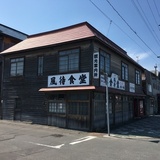



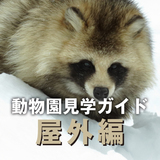
.jpg)



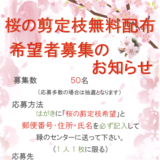









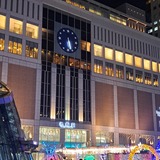
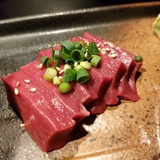
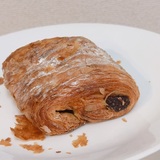
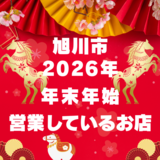
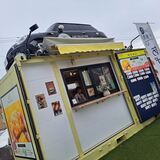
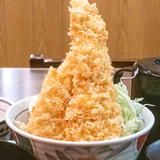
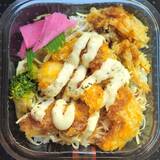

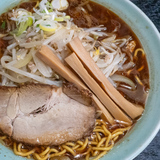
.jpeg)
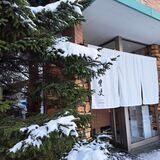





.jpg)



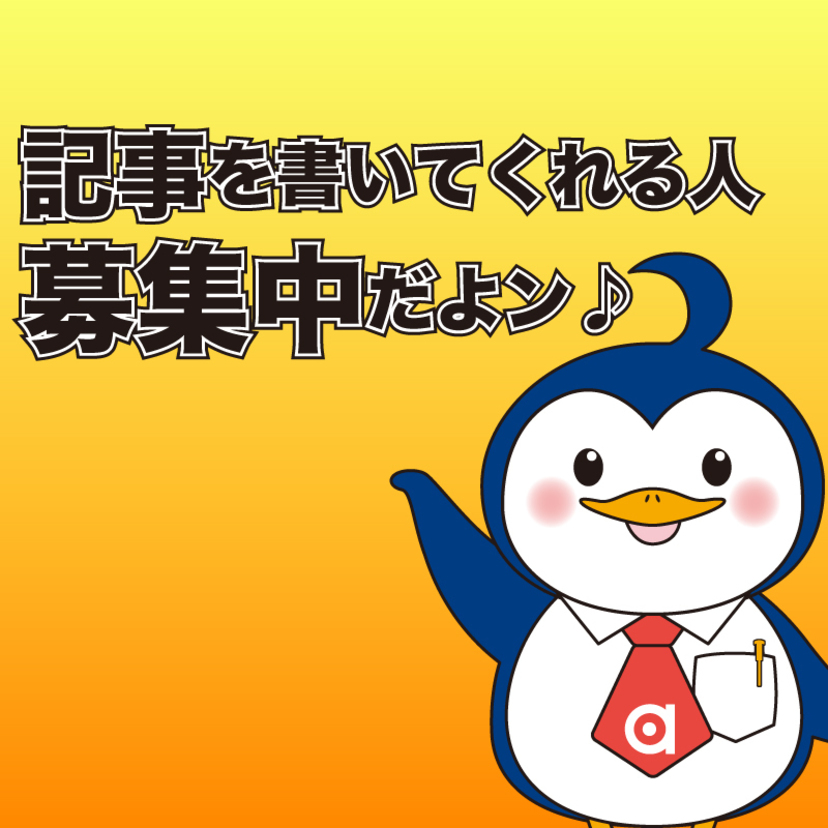
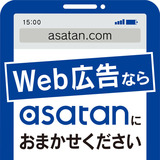

Hello there!
I am in charge of translating in english some of asatan's articles.
I'm from France and I have been living in Hokkaido for 6 years.
Things I like : drawing, pokemon, online games,
Things I don't like : melon, lags, waking up in the morning